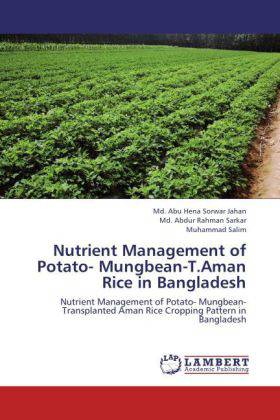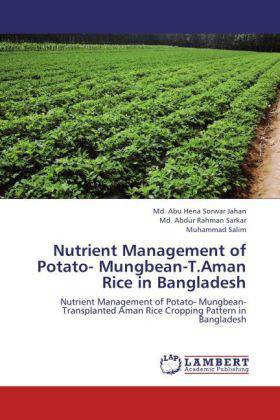
- Afhalen na 1 uur in een winkel met voorraad
- Gratis thuislevering in België vanaf € 30
- Ruim aanbod met 7 miljoen producten
- Afhalen na 1 uur in een winkel met voorraad
- Gratis thuislevering in België vanaf € 30
- Ruim aanbod met 7 miljoen producten
Zoeken
Nutrient Management of Potato- Mungbean-T.Aman Rice in Bangladesh
Nutrient Management of Potato- Mungbean-Transplanted Aman Rice Cropping Pattern in Bangladesh
Abu Hena Sorwar Jahan, Abdur Rahman Sarkar, Muhammad Salim
Paperback | Engels
€ 67,45
+ 134 punten
Omschrijving
The study was undertaken to find out the optimum nutrient management practice of potato-mungbean-T. Aman rice cropping pattern to maximize yield realization and economic return by maintaining soil fertility and productivity. The experiment was conducted at Regional Wheat Research Centre of the Bangladesh Agricultural Research Institute, Joydebpur Gazipur, Bangladesh for 2 consecutive years during 2006-07 and 2007-08. Twelve nutrient management treatments were tested in RCBD with 3 replications. The highest potato tuber, mungbean seed and T. Aman rice yield were obtained from STB+CRI in both the years. The nutrient balance was negative for N and K in all the treatments while the balances for P, S, Zn and B appeared positive in all the treatments except FP and control treatments in both the years. Properties of soil have been changed a little after completion of two cropping cycles in comparison to initial soil properties. Maximum gross return, gross margin and net return in STB+CRI (Tk.3,80,927 ha-1), (Tk.3,54,831 ha-1) and (Tk.2,77,172 ha-1), respectively. The highest BCR was observed in STB (3.69) followed by STB+CRI (3.67), IPNS (3.45) and IPNS+CRI (3.43).
Specificaties
Betrokkenen
- Auteur(s):
- Uitgeverij:
Inhoud
- Aantal bladzijden:
- 168
- Taal:
- Engels
Eigenschappen
- Productcode (EAN):
- 9783659214530
- Verschijningsdatum:
- 13/08/2012
- Uitvoering:
- Paperback
- Formaat:
- Trade paperback (VS)
- Afmetingen:
- 152 mm x 229 mm
- Gewicht:
- 254 g

Alleen bij Standaard Boekhandel
+ 134 punten op je klantenkaart van Standaard Boekhandel
Beoordelingen
We publiceren alleen reviews die voldoen aan de voorwaarden voor reviews. Bekijk onze voorwaarden voor reviews.











